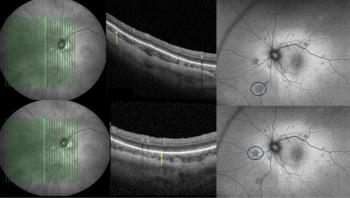
IOL dislocation, incorrect power most common reasons for IOL exchange
The most common indications for IOL exchange are IOL dislocation and incorrect IOL power, according to study results in press for the American Journal of Ophthalmology. Patient requests for IOL exchange due to dissatisfaction have also increased, and this is especially true for patients who achieve undesired visual acuity even without photic symptoms.
The most common indications for IOL exchange are IOL dislocation and incorrect IOL power, according to study results in press for the American Journal of Ophthalmology. Patient requests for IOL exchange due to dissatisfaction have also increased, and this is especially true for patients who achieve undesired visual acuity even without photic symptoms.
For this retrospective, interventional case series, researchers from the Jones Eye Clinic and Surgery Center, Sioux City, Iowa, USA, reviewed chart records of 57 eyes in 53 consecutive patients who had had an IOL exchange between May 2007 and December 2011. They found that the most common indications for IOL exchange were IOL dislocation (46%), incorrect IOL power (23%), patient dissatisfaction (21%), and optic opacification (7%).
In patients with IOL dislocation, a full 57% of eyes had posterior capsule opening (8/14) with in-the-bag dislocation. In patients who were dissatisfied, 42% had undesired visual acuity without symptoms of glare or optical aberrations (5/11). Surface calcification of silicone lenses associated with asteroid hyalosis accounted for the most cases of optic opacification (3/4), and researchers concluded : "Surface calcification of silicone lenses suggests that this type of lens is not appropriate in the presence of asteroid hyalosis."
Mean logMAR BCVA overall had improved significantly (P
"Optimal visual results with a low rate of complications can be achieved in each category of indication. The findings of the study may stimulate discussion of a question: Does in-the-bag dislocation occur only in eyes with an intact posterior capsule?" concluded the authors.
To access this study, go to: Am. J. Ophthalmol. 2013 Oct 30. pii: S0002-9394(13)00579-5. doi: 10.1016/j.ajo.2013.08.019. [Epub ahead of print] or click
Newsletter
Get the essential updates shaping the future of pharma manufacturing and compliance—subscribe today to Pharmaceutical Technology and never miss a breakthrough.













































